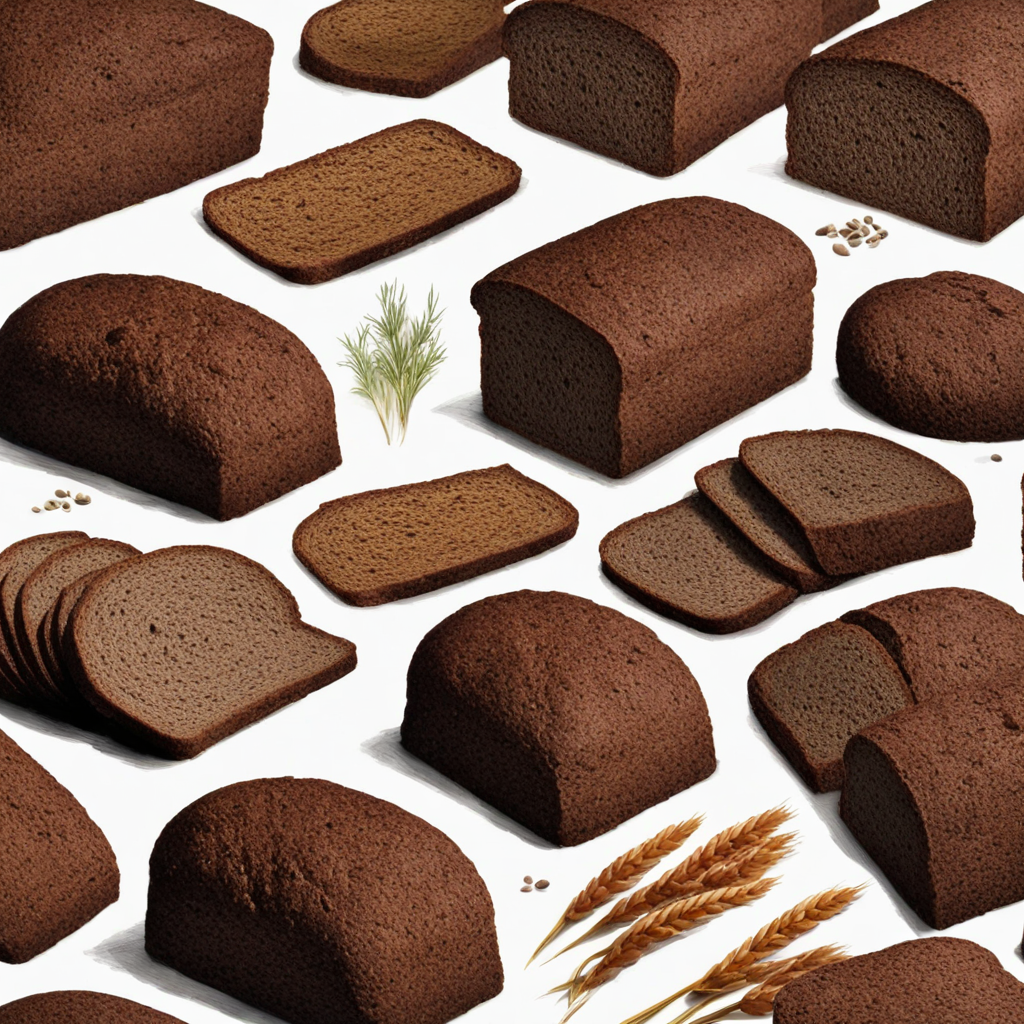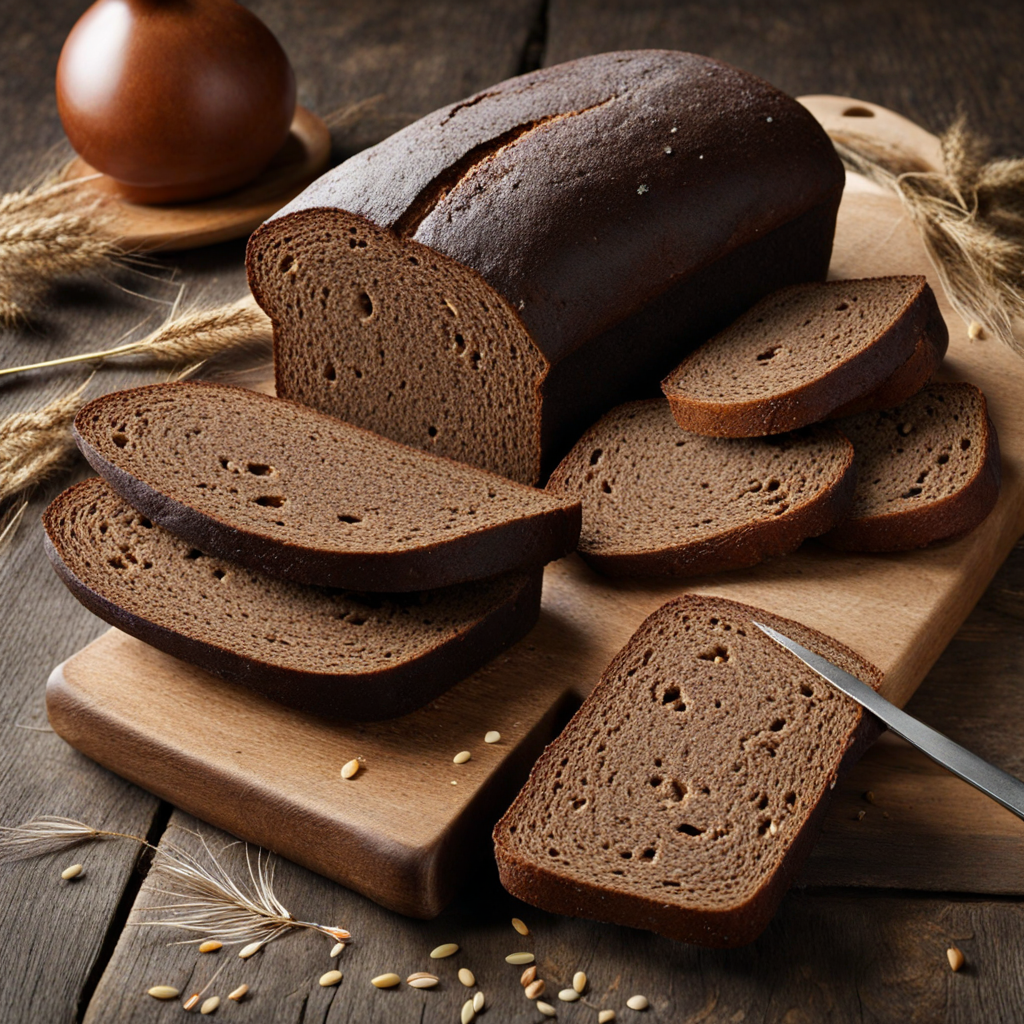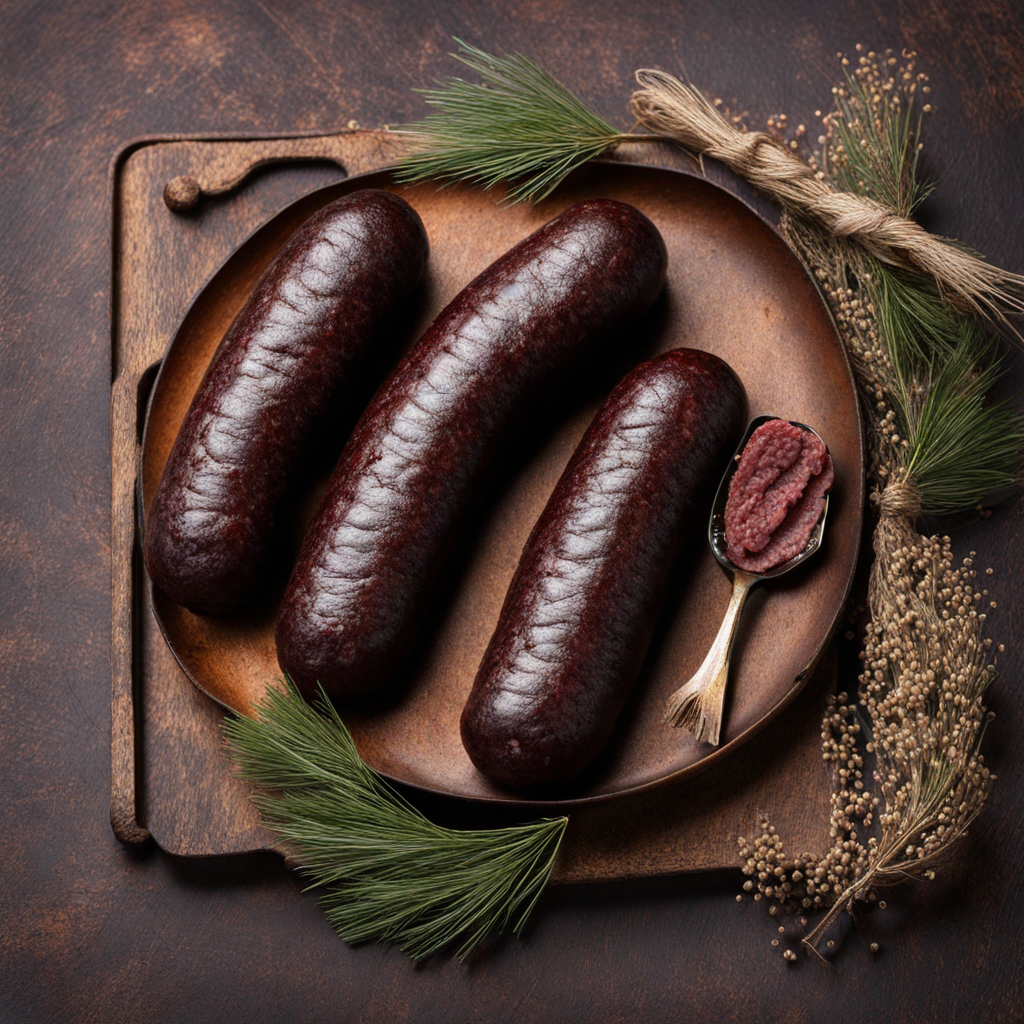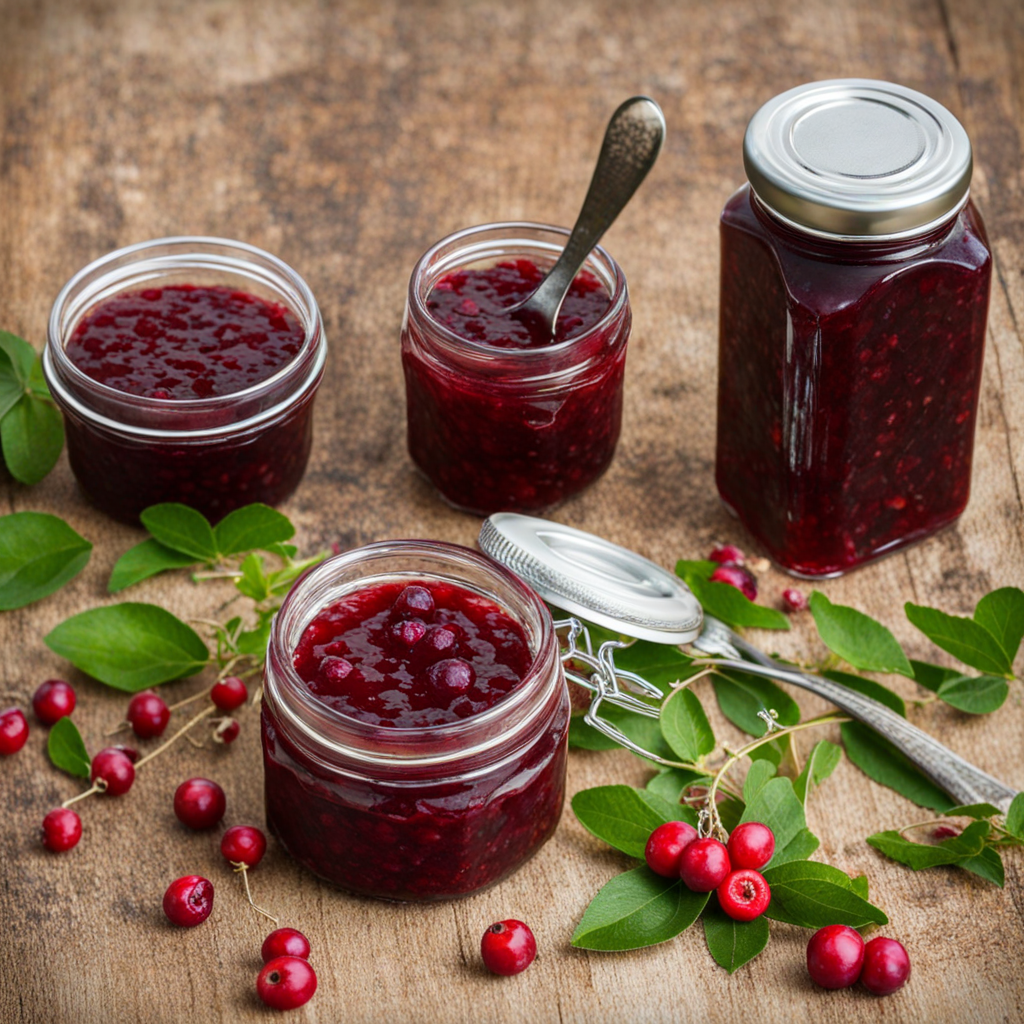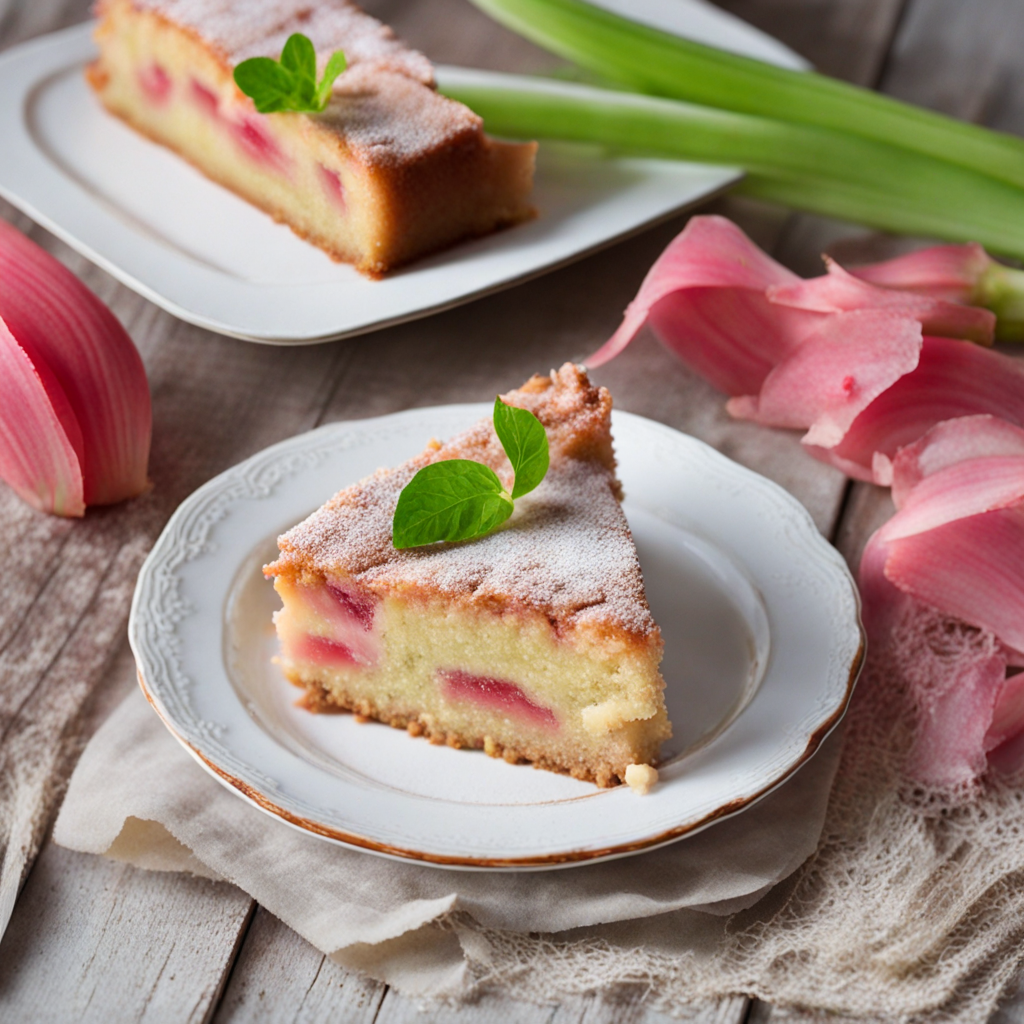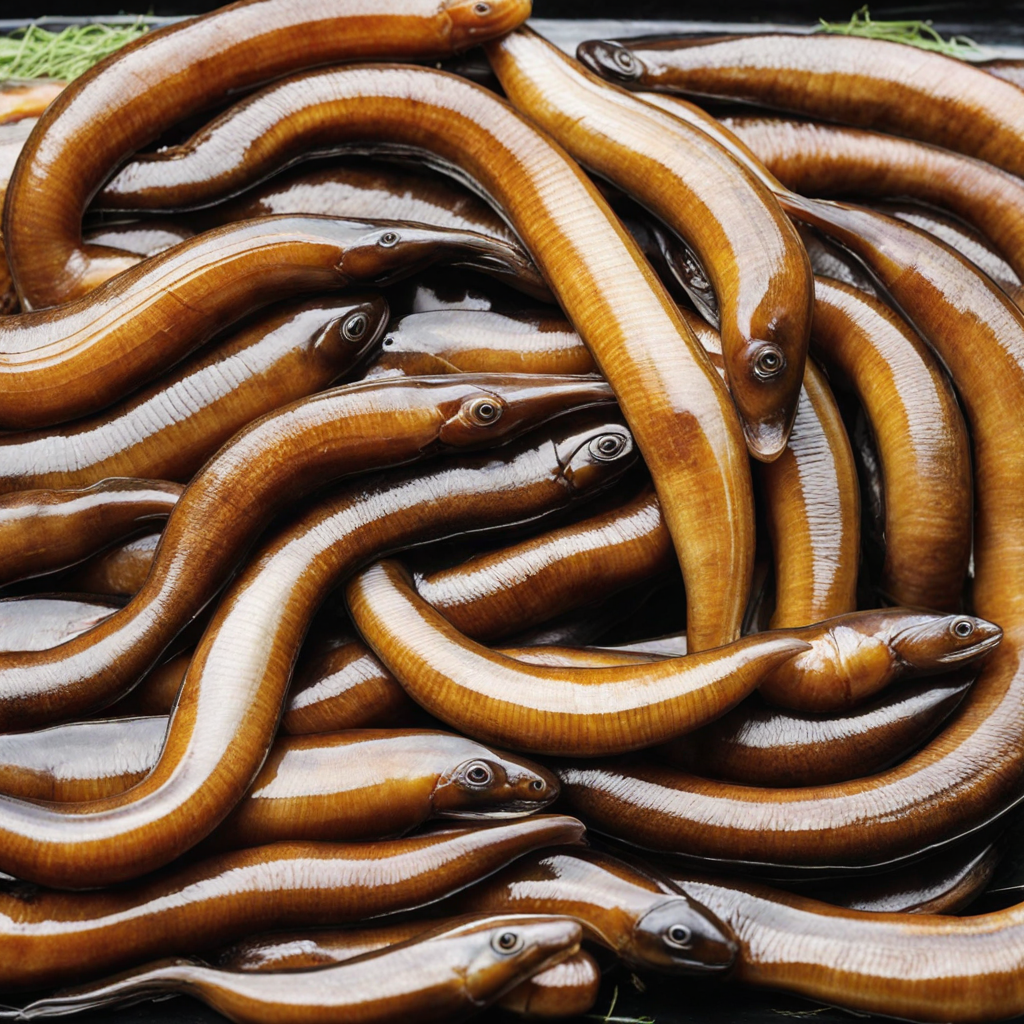Black Bread
Black Bread, or "Rukkileib," is a traditional Estonian staple that embodies the rich agricultural heritage of the region. Made primarily from rye flour, this dense, dark bread boasts a robust and slightly tangy flavor profile, which is achieved through a natural fermentation process. The bread's texture is hearty and chewy, making it a perfect accompaniment to a variety of dishes. Its deep color is a result of the rye grain, which is often mixed with other grains and seeds, adding complexity and nutritional value to each slice. One of the most delightful aspects of Black Bread is its versatility. It can be enjoyed in numerous ways, whether slathered with creamy butter, topped with local cheeses, or paired with cured meats and herring. This bread acts as a canvas for flavors, absorbing and enhancing the tastes of its accompaniments. In Estonia, it's common to find Black Bread served at family gatherings, festive occasions, or simply as part of a hearty meal, symbolizing warmth and hospitality. Beyond its taste, Black Bread carries cultural significance, representing the resilience and resourcefulness of Estonian cuisine. Often baked at home, recipes are passed down through generations, each family adding their own twist. The bread is not only a source of sustenance but also a connection to the land, as rye is a crop well-suited to Estonia's climate. For those looking to explore new culinary horizons, Black Bread offers a unique experience that showcases the flavors and traditions of Estonia, inviting you to savor each bite.
How It Became This Dish
The History of Must Leib: Estonia's Dark Bread #### Origins: A Staple of Survival Must Leib, meaning "black bread" in Estonian, is a traditional staple that has been woven into the fabric of Estonian culture for centuries. Its roots can be traced back to ancient agrarian practices, with evidence suggesting that the use of rye, a hardy grain well-suited to Estonia’s northern climate, began around 1000 A.D. Rye was favored over wheat due to its resilience in cooler temperatures and poorer soil conditions, making it a staple crop for Estonian farmers. The process of making Must Leib is deeply connected to the land and the seasons. Traditionally, the bread was made by local families, often in communal settings. The preparation involved grinding rye grain into flour, mixing it with water and a sourdough starter, and allowing the mixture to ferment. This method not only provided a unique flavor but also ensured the bread was rich in nutrients, helping sustain families through long, harsh winters. #### Cultural Significance: The Heart of Estonian Life Must Leib is more than just food; it embodies the spirit and traditions of the Estonian people. Throughout history, it served as a symbol of sustenance, resilience, and community. In rural households, it was often the centerpiece of the dining table, accompanying every meal. The bread was typically served with various toppings, such as butter, cheese, cured meats, and pickled vegetables, making it a versatile companion to the Estonian diet. Culturally, Must Leib has been woven into the fabric of Estonian celebrations and rituals. It plays a significant role in traditional feasts such as Christmas and weddings. During these occasions, special loaves were often baked, sometimes decorated with symbols or patterns that reflected the family's heritage or blessings for prosperity. The sharing of bread at gatherings symbolizes community and hospitality, reinforcing social bonds among families and neighbors. Moreover, Must Leib has historical significance in Estonia's struggle for independence. During the 20th century, particularly in the period of Soviet occupation, Must Leib became a symbol of national identity and resilience. While the state imposed restrictions on various aspects of culture and daily life, the continued practice of baking and consuming Must Leib served as a quiet act of defiance, preserving Estonian traditions against the backdrop of foreign dominance. #### Development Over Time: From Tradition to Modernity As Estonia moved into the 20th century, the production and consumption of Must Leib began to change. The industrialization of food production introduced new technologies and methods, impacting how bread was made and distributed. While many families still made Must Leib at home, commercial bakeries began to produce it on a larger scale. This shift allowed for greater accessibility, but it also raised concerns about the loss of traditional techniques and flavors. In the late 20th century, Estonia regained its independence, and with it came a revival of interest in traditional foods, including Must Leib. The 1990s saw a resurgence of artisanal baking, with many people returning to the age-old practices of sourdough fermentation and stone-ground rye flour. This revival was not only a nostalgic nod to the past but also a movement towards sustainability and authenticity in food production. Today, Must Leib is celebrated not only as a beloved national dish but also as a symbol of Estonia’s cultural heritage. It is now recognized internationally, with efforts to promote traditional Estonian cuisine in a global context. Artisanal bakeries have emerged, producing Must Leib that honors traditional recipes while exploring innovative approaches to flavors and ingredients. Some bakers experiment with the incorporation of seeds, nuts, and even spices, appealing to modern palates while retaining the essence of the original bread. #### Must Leib in Contemporary Estonia In contemporary Estonia, Must Leib continues to hold a special place in the hearts of the people. It is commonly found in homes, cafes, and restaurants across the country. Not only is it served as a daily bread, but it has also made its way into modern culinary creations, inspiring chefs to incorporate it into gourmet dishes. For example, Must Leib is often used as a base for open-faced sandwiches, topped with local ingredients such as smoked fish, marinated vegetables, and artisanal cheeses. Culinary festivals and events celebrating Estonian food culture have also emerged, showcasing Must Leib alongside other traditional dishes. These gatherings not only highlight the importance of the bread but also serve as platforms for promoting local producers and preserving Estonia’s gastronomic heritage. Furthermore, Must Leib has become a source of national pride, with initiatives to protect its heritage. Efforts have been made to safeguard traditional recipes and baking techniques, ensuring that future generations can continue to enjoy this integral part of their culture. In 2020, a proposal was made for Must Leib to be included in the UNESCO Intangible Cultural Heritage list, recognizing its significance as an emblem of Estonia’s identity. #### Conclusion: A Bread with a Legacy Must Leib stands as a testament to Estonia’s rich cultural history and resilience. From its origins as a simple sustenance food to its status as a cherished symbol of national identity, it reflects the journey of a people who have endured the trials of history while holding onto their culinary traditions. As Estonia continues to evolve in a globalized world, Must Leib remains a bridge between the past and the present, connecting generations through the shared act of baking and breaking bread. Whether enjoyed in the rustic settings of a countryside home or the chic ambiance of a modern café, Must Leib is not just a loaf of bread; it is a narrative of survival, community, and cultural pride—an edible piece of Estonia’s heart.
You may like
Discover local flavors from Estonia


